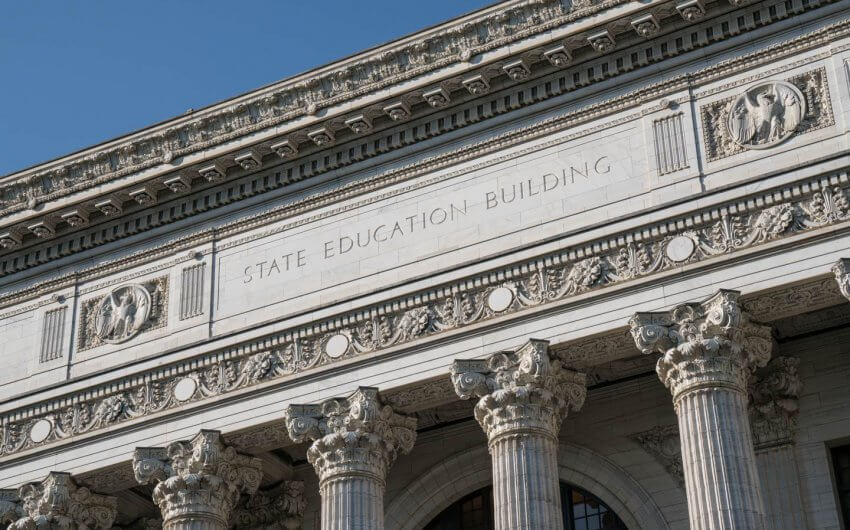Winning grant money is often the difference between implementing engaging, innovative curricula in the classroom and sticking with the same, out-of-date methods. Unfortunately, many educators and administrators are new to the grant writing process, and the thought of completing a multi-page proposal can be truly intimidating.
This guide will answer some of the most commonly asked questions about how to write a school grant proposal. We’ve also included a free downloadable grant writing checklist, which will help you keep track of your proposal and ensure you don’t leave out any crucial information.
How do you get a grant?
Winning an education grant comes down to finding the right funding source for your needs and then writing a proposal that captures the attention of the review board. While that might sound simple enough, it can be very challenging! There are many, many steps in this process, and longer grant applications can take months to put together, especially for educators who aren’t sure how to write a grant application.
Insider tip: Spend extra time at the beginning of the process pulling together all relevant materials and creating a compelling cover letter or grant letter. Then, search for funding sources that share your goals. For example, if you need laptops to ensure low-income students have an opportunity to complete their homework, look for grants like Mobile Beacon’s Connect for Success. This grant specifically supplies laptops and 4G LTE hotspots to help students struggling to keep up.
How do I apply for an education grant?
While every grant application is a little different, the overall process for writing a grant proposal for education will be very similar from one application to the next:
- Research available opportunities and find a funding source that best aligns with the goals of your project.
- Reach out to the main contact from the funding source (unless the instructions explicitly state otherwise). In many cases, the grant contact can give you extra information, and it helps to be in touch with someone who can answer your questions.
- Get all key stakeholders on board, such as your principal, administrative office, other teachers, and whomever else will need to sign off on the project you’re seeking funding for.
- Gather all the materials needed for writing your grant proposal for education, including budgetary information, any related research that supports your case, baseline numbers on how your class is currently performing, projections on how they will perform after the implementation of your new program, etc.
- Create an outline of your proposal. Map out what information you’ll cover and where you’ll talk about it.
- Start writing your grant proposal for education. As with any writing project, your first draft will not be your final product, so embrace the editing process! Make sure multiple people proofread your grant proposal.
- Submit your proposal before the deadline and follow up with your contact at the end of the process for feedback on your application.
Read more: Did you know that every state receives Federal funding for education in the form of Perkins Grants? We explain how to apply for Perkins Grant Funding.
What are the major components of an education grant application?
We can’t overstate that every grant application will be a little different, so the name and order of the components might change slightly from one application to the next. Use this section as a way to help you organize your thoughts while you’re writing a grant proposal for education.
Cover letter or grant letter
Your cover letter (or grant letter) is your chance to introduce your project and start generating interest. Keep it to the point and focus on your hook, or the compelling opening statement that immediately captures your audience’s attention. Many grants will require a cover letter or grant letter so the project can be vetted before the process of writing a grant proposal for education.
What you need to include:
- A high-level overview of your project; deep dives are for the proposal
- How much money your project will require and quick overview of what it will be used for
- Email address and phone number for the primary contact
Project summary, executive summary, or proposal summary
At most one page, the summary portion of your application will give the reader a concise overview of the project you are hoping to get funding for, as well as provide information about your organization. This will be a little bit more in-depth than your cover/grant letter but brevity is still key.
What you need to include:
- A brief statement of your organization’s name and mission
- A description of the problem you’re solving
- An overview of your solution to the problem
- An explanation of the funding you’ll need to enact your solution
Statement of need or problem statement
This is the section where you really need to convince the grant reviewers of your project’s need and importance. Write a compelling narrative to illustrate the problem and why your solution will really make a difference. Start out this section with an attention-grabbing opening statement that appeals to the grant reviewers’ emotions. Then, back it up with research, data, statistics, and facts.
What you need to include:
- A compelling narrative about your organization’s specific need
- Any research or statistics that support the need to solve this problem
Program design or your approach to solving the problem
This section will make up the bulk of your grant application. Here, you need to explain the details of your project, the goals and intended outcomes, and how you plan to achieve those outcomes. Use this framework to organize your program design when writing a grant proposal for education:
- What problem are you solving? Start by reiterating your problem statement; remind the grant reviewers what needs to be solved.
- What will your project achieve? Explain the intended outcomes and goals of the project and avoid using industry-specific jargon as much as possible.
- How will you achieve those outcomes? Dive into the nuts and bolts of your program design. Include any supporting research and documentation that supports your methodology.
What you need to include:
- The specific, measurable outcomes of the project or program
- The methods you will use to achieve those outcomes, including how you will implement them, who will be involved, what materials you need, when this will take place, and why this is the appropriate method to solve for your problem statement
- How you plan to measure and track outcomes, including how the data will be collected and analyzed
Project timeline
For some grant applications, the project timeline will be part of the program design section, and for others, it will stand on its own. As the name suggests, the project timeline is all about how long it will take for your project to achieve the desired outcomes. Provide details about when you will begin and end each event in the project, as well as information about how you will maintain the program beyond the grant period. Many grant writers prefer to use a table or chart to illustrate the project timeline.
What you need to include:
- Target dates for hitting key milestones in your project (i.e., when teacher trainings will happen, when assessments will take place, etc.)
- When you will achieve each desired outcome
- How you will maintain the program after the budget period
Proposal budget
Depending on the scope of your project, your proposal budget might be one page or multiple pages. The most important information to include is a breakdown of expenses required to implement your project and achieve the desired outcomes. For example:
| Item | Quantity | Cost per item | Total |
|---|---|---|---|
| Part-time technology assistant | 12 months | $500/month | $6,000 |
| Laptops | 24 | $300 | $7,200 |
| Parent volunteer | 8 hours/week | In-kind contribution | N/A |
What you need to include:
- All required personnel hours, including any necessary volunteer time (considered in-kind contributions)
- The cost of any required materials, transportation, software programs, etc.
- An explanation and justification of each listed cost
Supporting documents or appendices
Consider this your “catch-all” section when writing a grant proposal for education. Any supporting documents and information should be attached in the supporting documents/appendix. Read through the grant instructions carefully, as they will likely include a list of documents that you need to include in your application.
What to include:
- Full case studies, surveys, or other research you reference in your application
- A copy of your organization’s operating statement for the most recent fiscal year
- Letters of support from project partners and/or constituents
- A copy of your most recent tax return or financial audit
Read more: We’ve compiled a list of education grants available for schools across the nation. Check out the list.
STEM grant application examples
Examples of winning grant applications can give you an idea of how to organize your information and what to include in each section. The best place to start is researching if the grant you’re applying to has posted the previous winning application. Even an executive summary will give you a better idea of how to frame your project and outcomes. There are a few other resources you can consult when writing a grant proposal for education:
- U.S. Department of Education
- New Mexico State Center for Research and Outreach
- Love to Know
- Kurzweil Educational Systems
- Utah STEM Action Center
Do grants have to be paid back?
No, grants are considered “free financial aid” because they don’t need to be paid back as long as you meet all the obligations and criteria outlined in the application. When you’re writing a grant proposal for education, double — and triple — check that you’ll be able to meet all deadlines, outcomes, and obligations.
























